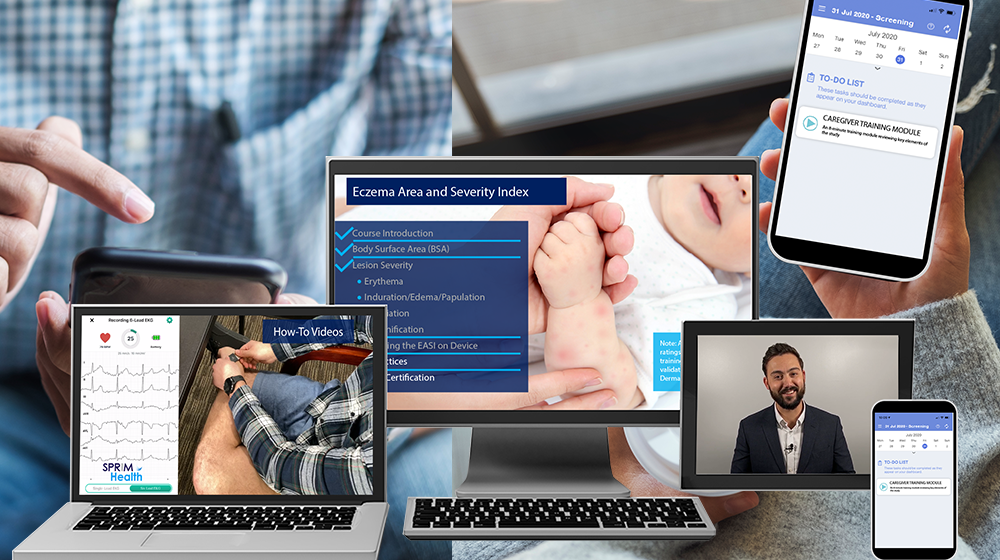IMMUNOLOGY
Innovations in Immunology Clinical Trials and DCTs
Immunology clinical trials frequently include a primary endpoint that is a composite of electronic patient reported outcomes (ePRO), electronic clinician reported outcomes (eClinRO) and lab values. For example, a very common endpoint is based on the American College of Rheumatology improvement criteria of 20% (ACR20), 50% ACR50 or 70% ACR70 response rates. Within this endpoint, it is essential for joint pain and swelling to be assessed by a clinician and for patients to have improvement in at least three of the following assessments:
Patient Based (ePRO)
- Patient global assessment of disease activity
- Patient pain scale
- Disability/functional questionnaire (Health Assessment Questionnaire Disability Index)
Clinician Based (eClinRO)
- Joint counts
- Physician global assessment of disease
Lab Values
- Acute phase reactant (ESR or C-Reactive Protein)


ePRO Utilization and Digital Patient Training
In immunology trials, the primary endpoints are frequently contingent upon 1 or more ePRO based efficacy outcomes. Diary design needs to be simple, the content clear and engaging with minimal burden on patients. It is critical to utilize ePRO technology to facilitate compliance by using notifications, reminders and alarms. While these PRO’s may seem simple, such as patient pain and global assessment of disease activity, these concepts can be very difficult for patients to understand how to report on accurately with proper training. For example, “global disease activity” is an extremely nebulous concept and even with understanding of the concept, how transitions in disease status translate to movement along a 101-point visual analog scale (VAS) can be very difficult for patients to do in the absence of standardized training. Similarly, pain while the most common use of ePRO across therapeutic areas, remains a highly subjective endpoint, confounded by placebo effect. Patient reporting of pain “now” versus “average” versus “worst possible” are all very different questions that patients without training do not innately understand how to accurately report on these questions. Visual analog scales (VAS) remain one of the most, if not the most difficult scale for patients to use. While there is a perceived notion of enhanced statistical power, this is essentially eliminated by the fact that patients do not and can not relate to 101 points of their health status. Scale anchor positioning can be further be confusing to patients as to where the scale 0 and 100 are located. Even utilization of a vertical VAS does little to improve baseline patient understanding of how to use a VAS. Thus, SPRIM Health patient training has been proven to dramatically reduce placebo effect and improve patient understanding for how to report on concepts such as pain and global disease severity items.
eClinRO and Training of Site Staff
Digitally programming of ClinRO’s is critical to ease burden on site staff, remove errors induced by manual scoring and enable integration of lab values with patient and clinician reported outcomes. Digital training of site staff ensures that rater variability is minimized, training standardizes eClinRO administration and scoring, reduces placebo effect and overall improves the signal to noise ratio.
